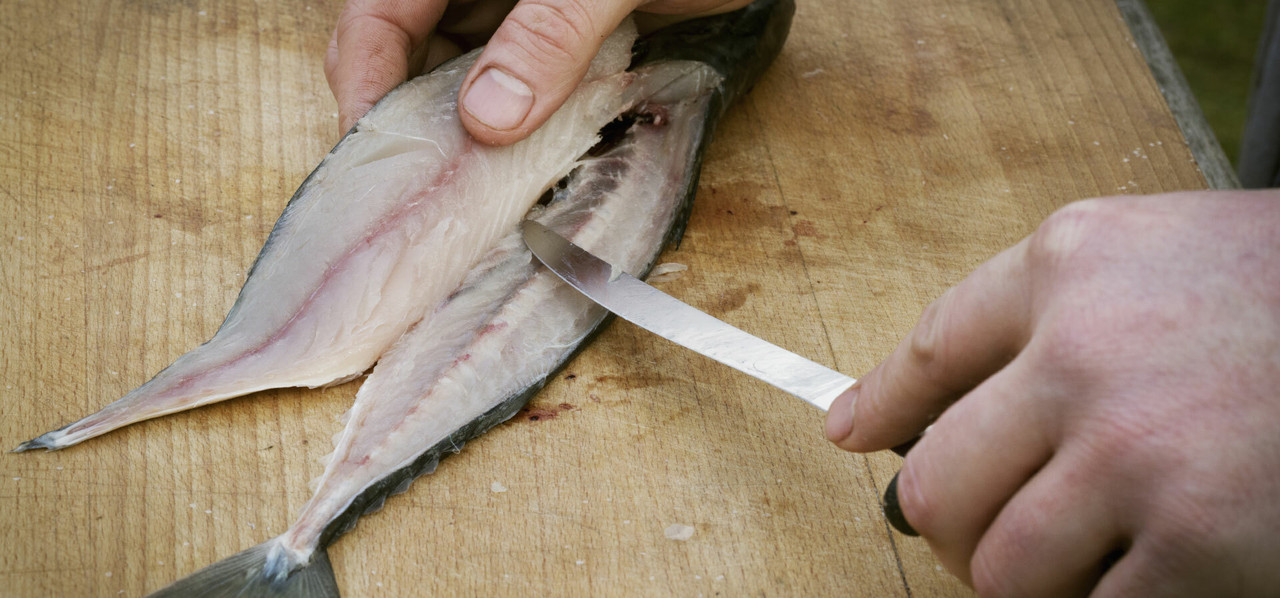A Tackle Shop Guide to Fishing Knives
Choosing the right fishing knife is about more than just sharpness; it's about matching the blade style and steel quality to the specific jobs you need it for. From a flexible fillet knife for a delicate flathead to a tough bait knife for cutting up squid, this guide will break down the key differences to help you make a smarter choice.
A Note From Our Local Experts
"A common conversation we have in the shop starts when a customer wants to buy 'one knife that does everything'. While it sounds efficient, I've learned from my own experience that you'll ruin the razor-sharp edge of a good fillet knife the first time you try to hack through a block of frozen pilchards.
The secret that experienced anglers know is to have a simple two-knife system: a tough, sturdy bait knife with a thicker blade for all the rough work, and a separate, flexible fillet knife that you *only* use for processing your catch. It’s not about having more gear; it’s about having the right gear. It makes the job faster, safer, and you'll get much better fillets at the end of the day."
- Ben Czulowski, Owner, Fishing Tackle Shop (Ocean Storm) | 20+ Years selling fishing knives
Understanding Fishing Knife Blades
The two most important factors in a knife's performance are the blade's flex and the quality of the steel.
✔
Flexible vs. Stiff Blades: A flexible blade is the key to a good fillet knife. It allows the blade to bend and follow the contours of a fish's bone structure, which is essential for removing the maximum amount of flesh from smaller species like bream and whiting. A stiffer blade provides more power, making it the better choice for cutting through the heavy rib cages of big snapper and other reef fish.
✔
Steel Quality & Coatings: The steel is the heart of the knife. Most quality fishing knives use a high-carbon stainless steel. The "high-carbon" part means the steel is very hard, which allows it to be sharpened to a razor edge and, more importantly, to hold that edge for a long time. The trade-off is that higher carbon content can make steel more prone to rust. That's where a protective coating (like Teflon or Titanium) comes in. It's not just for looks; it acts as a crucial barrier, sealing the steel from the harsh saltwater environment and preventing surface rust from taking hold.
A Guide to Knife Types & Sharpeners
- Bait Knives: These are the workhorses. They have a tough, sturdy blade and are often serrated, making them perfect for sawing through semi-frozen baits like pilchards and squid.
- Fillet Knives: These have a long, thin, and often flexible blade designed for one job: cleanly separating the fillet from the bone with minimal waste.
- Knife Kits: For anglers who do a bit of everything, a knife kit often offers great value. These kits typically include a range of knives (fillet, bait, boning) and a sharpener and in some models we sell, they come with a convenient, protective roll.
- Sharpeners: A sharp knife is often a safer knife, and different tools do different jobs. A sharpening steel doesn't actually remove metal; it *hones* or re-aligns a blade's edge that is already sharp, making it perfect for a quick touch-up between fish. To bring a genuinely blunt knife back to life, you need something more aggressive like a sharpening stone or a pull-through sharpener, which will remove a small amount of steel to create a brand new, razor-sharp edge.
Frequently Asked Questions
How do I stop my fishing knives from rusting?
This is the most critical part of knife care. After every single trip in saltwater, wash your knives with fresh water and a mild soap, and then dry them thoroughly. The most important step is to ensure the knife is completely dry before putting it back in its sheath, as trapped moisture is the number one cause of rust, even on stainless steel.
What is the most important feature in a fillet knife's handle?
Without a doubt, the most important feature is a non-slip grip. Think about the reality of filleting a fish: your hands are cold, wet, and covered in fish slime. The last thing you want is your hand slipping down onto a razor-sharp blade. A handle made from a grippy, textured rubber or a modern polymer isn't a luxury; it's the single most important safety feature on a fillet knife. It ensures you have a secure, confident hold, which is essential for both safety and making clean, precise cuts.
How does blade length affect filleting?
This is an excellent question. As a general rule, the length of your fillet knife blade should match the size of the fish you are cleaning. A shorter, more maneuverable 6-7 inch blade is perfect for smaller fish like bream and flathead. For larger fish like big snapper or salmon, a longer 9-inch blade allows you to make a clean, single cut from the head to the tail, resulting in a much neater fillet.



